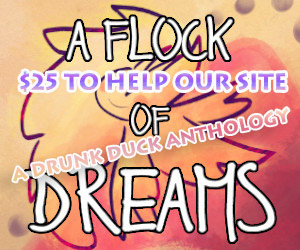Because people have asked how Harkovast is coloured, here is some advice that may be useful if you would like to colour the Harko-way!!!
1) Never leave white paper showing underneath. Some artists shade lightly with pencil and it looks fab. (IE: Briggs; Snowman). But I like the look of full colour saturation. Use white pencils liberally, not only to colour white over white paper, but also to blend other colours. I use about two white pencils a week.
2) To make a smooth finish use a lot of weight on the pencil so it is very dark and saturated. If your shoulder and hand arenât sore by the end of posting day, then you arenât pressing hard enough. Use blending stumps to get rid of any white paper flecks that are still showing after all attempts of saturated colouring.
3) Blending Stumps: recycled paper formed in sharpish sticks used to blend colours. You can buy them online. I use eBay. These are excellent for making shading on light colours too. To clean and sharpen the blending stump, sand off the tip with a nail file. That way you arenât rubbing colours onto work you donât want there.
4) Use cheap paper. Believe it or not, we use standard (and sometimes sub-standard) grade computer printing paper for all our art. Professional artists would probably use textured art paper, which may actually absorb colours better, but our budget dictates cheap paper. It is possible to âoverworkâ paperâeven art paper—to a point that no more pencil can be coloured on it, and if the pressing is too hard, or you have to erase some, then the paper can be scarily thin. Luckily Photoshop can fix it.
5) Photoshop! You would be surprised at the amount of times the babies have got hold of the art! Sometimes the pages are fully ripped and dripped upon. Photoshop is fantastic for the lazy sod who wonât put the art out of harmâs way! One can readily say âoh wellâ about the grease spot, as colour can be copied and pasted from another section of work.
6) Photoshop from scanning. When you scan your original artwork you may find that your work appears to be very faded. This may apply more for people who colour with pencils. I find it really annoying that original artwork doesnât translate as well on computer. On Photoshop, one can darken the exposure and bring the artwork back to its near-desired shade. I find it a bit of a trade-off, as sometimes I feel the saturation changes on Photoshop can bring out the pencil strokes and exaggerate white flecks on the paper. To me itâs like listening to speakers too loudly where the song is good, but the sound is a bit distorted. Nothing is as good as the original and that is where computer artists have the clear advantage. A better scanner might be a factor, too.
7) Light table! We are sick to death of putting our paper against the television set and waiting for a light scene so we can copy our work from one page to another. This had to be done when Cate got hold of the pencils and decided to colour an original sketch for us. We let her keep her own work and tried again with another page. Get a light table so you can trace work if you need to!
8) Donât drop your pencils! If a pencil is dropped, the lead can break internally in multiple places leading to frustration and waste.
A brief explanation of the pictures and the process from the beginning:
Picture One:

⢠I find it more efficient to try to colour the scenes/characters on a page using the same colour at the same time, like an assembly line. That way I get the colours consistent of the same character and I donât lose track of the pencil in the meantime.
⢠As you can see, the Junlockâs hair is lightly shaded with the main colour whilst his chest has now been coloured in white as will the rest to blend the colours.
⢠You can see that Dan has drawn over his sketches with a pen so there is no difficulty in making out the drawings. This is especially important as just plain pencil drawings would be smudged and faded as they are worked over time. Being part of a team, I also have to consult with my husband in the beginning to make sure I know exactly what it is he is trying to convey in his drawings. There can be loads of fine lines and action going on and it can be confusing. Add to that energy weapons, which are transparent.
Picture Two:

⢠Here you can see I have completed the Junlockâs coats with white pencil and have blended them with a stump. I will redraw the black outline around the characters, obviously making the hair more textured.
⢠Light colours like Chen-Chenâs top get the shading first, then the cream colour afterwards. Then the two are blended with a blending stump. Sometimes I will use a white pencil to blend on light colours as long as it doesnât make them seem too light or washed out. Some colours like metallic anything can only get their shading done afterwards as a final step because metallic pencils cover completely. (You should see the stack of metallic silver pencils we have for armour and blades.)
Picture Three:

⢠While this is not complete, you can see itâs the homestretch. Chen-Chenâs trousers are actually coloured in metallic jade, and those require shading after colouring.
⢠Chen-Chenâs blue features are coloured over her celadon green skin. A blending stump will be used in the final process to blend the blue in with the green.
⢠Notice the Junlockâs outstretched hand in the upper left panel. I have coloured with a very sharp white pencil around his hand to bring it out in the foreground. Once this is done, then the black outlines have to be drawn carefully over again with a very sharp point for the final look.
Picture Four (Sliding Mountain Style):

⢠White pencil and blending stumps have been used again to give the affect of blur, or movement.
⢠White has been added to the blood to make it more reflective.
⢠White added all around (very fine pencil tip) on eyeballs, features such as knuckles, fabric folds, claws, launched teeth, etc.
⢠Love it or hate it, solid colours have been added to the action sequences. These are added to frames with high action and actual violent contact, not as a short cut to get the page moving as I sometimes accuse Vast. (I like to do backgrounds!)
Obviously I will think of other methods I use over time and share them when I can. Bye for now!
Mrs. Vast









